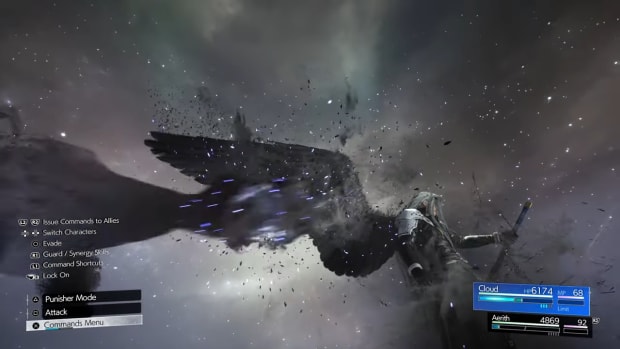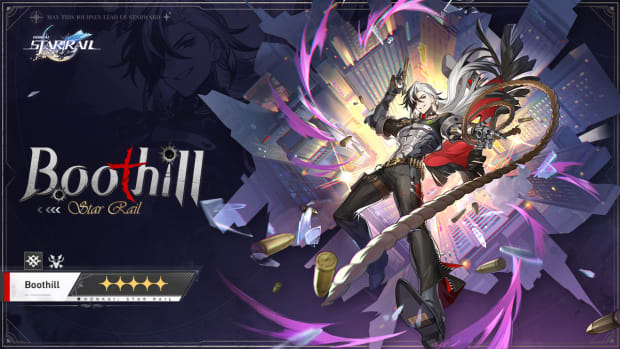
Behind the tech and visuals of Marvel's Spider-Man 2 with Insomniac
You only have to look at the Yakuza series to see how building and iterating on a single virtual world can leave developers free to put their efforts into other areas. You know, like go-karting minigames and hostess bar management. So it is for Marvel’s Spider-Man 2, which takes us on a web-swinging tour through a familiar New York when it launches for PS5 tomorrow.
The first Marvel’s Spider-Man, its standalone spinoff featuring Miles Morales, and even the next-gen remaster were technically impressive, but they were also foundational. A sequel in the same playspace allows the developers at Insomniac to go wider, creating new districts, while also drilling down into the small details.
There are lots of things you won’t even pick up on as you’re playing. Like how you can see reflections within reflections between water and glass, or how the sound of rain subtly changes to a pat, pat, pat when you pass by an awning. There’s an impressive density at street level, in a game where you spend most of your time swinging and gliding across the skyline.
“The team wants to add as much as possible,” project director Jeannette Lee says. “We love the idea of putting stuff for people to find everywhere. And so, we spend time on our pedestrians and traffic, and things like adding suspension to the car. I think they even drift now when you do a car chase.”
These might seem minor, but once you’ve punched a perp into a white van and seen it rock on its suspension from the impact, it all makes sense. It anchors you to the world (and their head to the side door).
When you do get down to ground level, take a walk through the streets of New York and you’ll hear a mishmash of conversations. Rather than recording 20 script reads that play on a loop, Insomniac made a modular system that takes chunks of dialogue and blends them into each other like prompt cards, creating new ambient dialogue on the fly.
“They're assembled in real-time from different things people could talk about,” core tech director Mike Fitzgerald explains. “Are they going to agree or disagree? Are they angry? Are they happy?”
You might not consciously pick up on it, but all of these small details together make the city hum.
Insomniac would take photos and videos of New York and place them side by side with the same location in-game. From there, the developers studied the differences and created a list of things they could do to add authenticity.
“One of them was the interiors of the buildings – to try and give more depth and variety,” Fitzgerald says. “We came up with a neat trick that was able to get us real 3D interior spaces with people working at their desks or doing yoga on the floor.”
Head out onto the water and you can swing and web wing between the boats, catching wind tunnels and perching on riverboats to soak it all in.
“They're listening to music and chilling out and you get a little tour of the East River,” Fitzgerald says.
Build up speed and you can spring from the top of sailboat masts and skid on the water’s surface. If you’re not moving fast, you’ll plop in and swim – that’s not very Spider-Manny but there’s always a boat close by to get you going again. Go fast enough and you can spread your web wings to glide across to the next island.
“We had this concept of expanding the city,” Lee says. “So we were like, ‘It would be cool if you could go across the river with the wingsuit’. It was a back-and-forth of making sure that there were enough traversal toys across the river to make sure it felt fun, that you wanted to do it, and that it didn't feel like a chore. I think we nailed that.”
Of course, the web wings added a whole other challenge. You could already swing pretty quickly through the city in the first game, but Marvel’s Spider-Man 2’s traversal is a shot of nitrous. Add on to that how high the player can get, their field of view potentially stretching across the entire metropolis, and it’s a miracle that there’s no visible texture pop-in.
“We have a whole cascade of different systems that come together to try and preserve detail up close,” Fitzgerald explains. “The mid-distance gives you that sense of the same detail without losing anything, and then at the far distance, trying and convince your brain that it's still seeing the same high-detail stuff that far away. All those different systems and ways of rendering need to transition into each other smoothly.
“There's no magic trick to that – it was a lot of time and effort spent just making sure we have consistency in our asset development so that they all break down correctly to the right levels of detail, that our texture streaming knew how to prioritize the things that are close to so that you never see low detail textures. And just trying to, you know, knock out every little air conditioning unit on a roof that disappeared at the wrong time.”
It’s an impressive achievement when you consider how many smaller-scale, slower-paced games have suffered from texture-loading issues – especially when you consider that the web wings allow players to get high above the buildings that work as natural blockers to view distance.
“You’d be horrified if you saw what the game looked like six or nine months ago,” Fitzgerald laughs. “It requires a lot of confidence and faith in your team and your advanced planning that it is going to come together. But that's what it is right? You're building this massive thing. And it's not to say it looks terrible all the time. Every bit of work that goes in, you get excited about, even though the textures on this are all wrong. You have to look through all that and know that you get to tie it all up.”
Insomniac has cemented itself as one of the most technically able teams in the industry. Marvel’s Spider-Man 2 boasts ray-traced reflections across all graphics modes on PS5, from 4K resolution to 60fps, and even variable refresh rates for those with capable TVs. No matter which option you choose, it looks slick.
It’s almost three years since the PS5 launched, but somehow Insomniac has published four games for the console in that short time. Maybe the clue is in the studio name – the developers don’t sleep.
Having development kits early thanks to being a PlayStation studio has paid off in terms of getting the team used to the tech, and that goes a long way toward explaining why Marvel’s Spider-Man 2 is significantly ahead of what any other studios have managed to do with ray tracing on consoles. But there’s more to it.
“Part of it is just knowing it was important for our game – for New York – and knowing that the investment in that tech would pay off both visually in the feeling and it gives you being in that space. It always pained me whenever I saw a screenshot someone posted online [of Marvel’s Spider-Man] where the ray tracing was off. I'm always like, ‘I don't want it to look that way. It's supposed to look the other way!’ For this game, to be able to put our foot down and say, ‘No, we're not going to do that mode, we're going to have ray-tracing on for 30fps and 60fps, and we can hit it for launch, and we feel confident – that was great.”
If all of that sounds like a big undertaking, wait until you’re wearing one of the new costumes. As well as showing off better muscle deformation in the suits and giving characters better hair – Miles Morales in particular has a tight trim – some of the costumes also come with capes. Or, as Fitzgerald calls them when I mention it: “F***ing capes”.
“That's one that came together towards the end, but they're pretty fun,” he continues. “There's some cutscenes in the game where Spider-Man lowers himself down, upside down. With a cape on, it's gonna look a little silly – there's just this cape hanging through the middle. And so trying to figure out the right ways to make them behave correctly, especially when your character moves insanely fast through the environment and twists around all the time and, and all that kind of stuff, [was hard].”
Of course, all of these are lessons Insomniac can take into its future games. If you look at Ratchet and Clank, you can see how that game helped the team figure out how to work with ray tracing and particle effects. Don’t be surprised if Peter Parker and Miles Morales teach Wolverine some lessons when he leaps onto PS5 at some point in the future.
“Yes, I'm certain some parts of Spider-Man 2 will find their way into future games,” Fitzgerald teases. “And I'm not sure we even know what they are yet.”
If you're excited to get stuck in, here are the release times for Marvel's Spider-Man 2. We also had a chat with Marvel’s Spider-Man 2 senior game director Ryan Smith about Marvel’s Wolverine and Insomniac's learnings from its trio of Spider-Man games that will carry over into the studio's next Marvel title.







